Every child grows in their own special way. Some learn fast, some take their time. But no matter the speed, all kids go through different stages as they grow and learn. These stages are part of something called cognitive growth. That just means how a child starts to think, learn, and understand the world around them.
From the time a baby is born to when they become a teenager, their brain is growing every day. It’s like watching a tiny seed turn into a strong, leafy tree. At each step, they learn new things — how to talk, how to solve problems, how to remember stuff, and even how to make good decisions.
In this article, we’ll walk through all the main stages of this growth, starting from birth all the way to the teen years. You’ll see what usually happens at each age, how you can help your child grow smarter, and why each stage matters.
Stage 1: Infancy (Birth to 2 Years)
This is the very beginning. When a baby is born, their brain is like a sponge. Everything is new—light, sound, faces, voices. At this stage, babies learn by using their senses: seeing, hearing, touching, tasting, and smelling. They also start to move and explore by reaching, crawling, and later, walking.
What Happens in the Brain?
In these early months, the brain is building fast. New connections (called neurons) are forming every second. Every time a baby sees your face, hears your voice, or touches a toy, their brain grows a little more. These tiny moments build the base for all future learning.
Babies begin to understand cause and effect. For example, if they shake a rattle and it makes a sound, they learn that their action caused something to happen. This is a big deal!
How They Learn
- Through play: Babies learn best when they play. Give them soft toys, music, and let them explore safely.
- Through interaction: Talk to them often. Even if they can’t talk back, your words help their brain grow.
- Through repetition: Repeating songs, games, or sounds helps their brain connect ideas.
What You Can Do
- Talk a lot. Describe what you’re doing, name objects, sing songs. Your voice is their favorite sound.
- Read books, even simple picture books. Babies love colors and sounds. It builds vocabulary and listening skills.
- Play peek-a-boo or hide-and-seek with toys. These games help them understand that things still exist even when they can’t see them—this is called object permanence, and it’s a big step in thinking.
Signs of Growth
- Turning their head when they hear your voice
- Smiling when you smile
- Reaching for toys
- Watching and following moving things with their eyes
- Trying to copy sounds or movements
These may seem small, but they are huge steps for a baby. Every coo, giggle, and crawl is a sign that their brain is doing important work.
Stage 2: Toddler Years (2 to 4 Years)
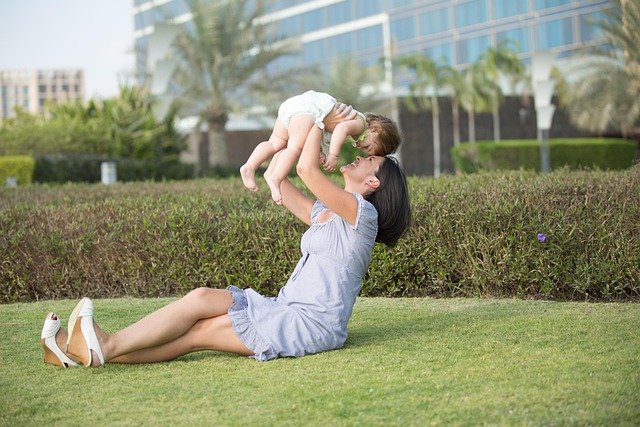
Now the world really opens up. Toddlers are full of energy, curiosity, and questions. At this stage, their brains are growing fast, and so is their ability to think, talk, and make sense of things. This is when kids begin to ask, “Why?” about almost everything.
What’s Happening in the Brain?
Toddler brains start building their memory. They remember routines, places, and people. They begin to understand symbols — like how a picture of a dog means “dog,” or how words in a book represent things in real life.
Their brains are also starting to handle simple logic. For example, if a toy is under a blanket, they can now figure out how to lift the blanket and find it. This might sound small, but it’s a big mental leap!
How They Learn
- By asking questions: Questions are how they explore the world. Each “why” helps build thinking skills.
- By copying others: Toddlers love to mimic parents, teachers, or even cartoons. Imitation helps them learn how to act and solve problems.
- By playing pretend: When they pretend to cook, talk on a toy phone, or care for a doll, they’re actually learning how to think like adults.
What You Can Do
- Talk and listen. Answer their questions patiently, even if they ask the same thing ten times.
- Give choices. “Do you want apples or bananas?” This teaches decision-making.
- Let them play freely. Building blocks, dressing up, or drawing helps with brain development.
- Name emotions. Help them understand feelings: “You’re sad because the toy broke.”
Signs of Growth
- They follow simple instructions like “Pick up your shoes.”
- They understand time in a basic way (“after lunch” or “before bed”).
- They can name body parts, colors, and everyday objects.
- They start using short sentences: “I want juice” or “Mommy go work.”
At this stage, they’re not just learning what things are—they’re learning how things work. It’s a fun (and sometimes messy) time, but it sets the stage for bigger thinking later.
Stage 3: Early Childhood (4 to 7 Years)
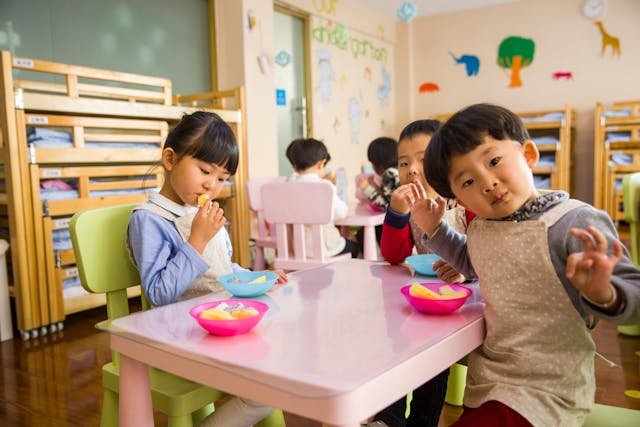
This is the age where your child begins to truly think about thinking. They become more curious, creative, and independent. They start noticing patterns, asking smart questions, and learning how to solve problems on their own. Their brain is busy all day!
What’s Happening in the Brain?
At this stage, kids begin to form more organized thoughts. They can focus for longer periods. Their memory becomes stronger, and they start connecting ideas. They can also imagine things that aren’t right in front of them — like talking about what happened yesterday or planning what they want to do tomorrow.
They also begin to understand that others have thoughts and feelings too. This is called empathy, and it’s a big step in both thinking and social skills.
How They Learn
- Through stories: They love stories with beginning, middle, and end. This helps build understanding of time and cause-and-effect.
- By exploring: Kids at this stage ask “what if” questions. What if the sun disappeared? What if my cat could talk?
- By solving small problems: Like fixing a tower that falls, tying their shoes, or figuring out how a game works.
What You Can Do
- Ask open-ended questions. Like “What do you think will happen next?” or “Why do you think that?”
- Read every day. Books help them imagine, learn new words, and understand different ideas.
- Encourage play with rules. Board games and puzzles help with planning and thinking ahead.
- Talk about feelings. Help them explain their emotions in words. This builds emotional thinking too.
Signs of Growth
- They can explain why they did something (“I shared because she was sad”).
- They understand the difference between real and pretend.
- They can follow more complex instructions like “Brush your teeth, then put on your socks.”
- They start to understand fairness, sharing, and taking turns.
This stage is full of lightbulb moments. They start making jokes, asking clever questions, and explaining their thoughts. It’s a magical time when their brain is bubbling with ideas.
Stage 4: Middle Childhood (7 to 11 Years)
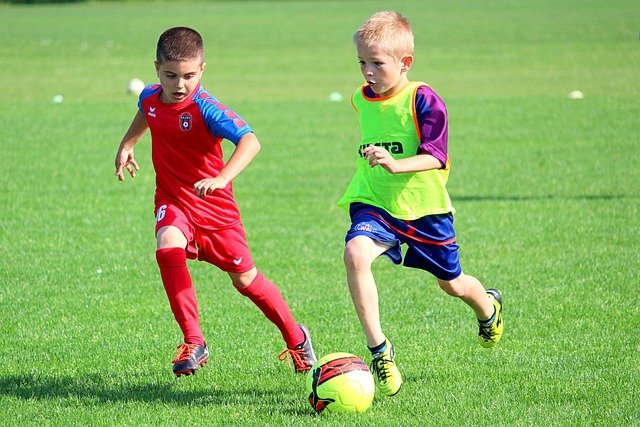
By this stage, kids begin to think more deeply and clearly. Their thoughts become more logical. They ask better questions. They can handle more complex ideas and are much more aware of how things work. It’s also when they begin to see things from different points of view — not just their own.
What’s Happening in the Brain?
Their brain is becoming more powerful every day. It can now hold more information at once. They can compare things. They can follow long sets of instructions. They can also understand rules, not just for games, but for life — like fairness, honesty, and consequences.
They move from learning only with their eyes and hands to learning with their mind. They can imagine situations, solve multi-step problems, and remember things more clearly.
How They Learn
- Through structure: Kids at this age like rules, patterns, and step-by-step logic. They enjoy knowing “how” things work.
- Through repetition and practice: They need to use what they learn again and again to make it stick.
- By asking “how” and “what if”: This is when science, math, and real-world thinking become super fun.
What You Can Do
- Let them solve their own problems. Instead of jumping in, ask “What do you think you can try?”
- Involve them in planning. Ask for help planning meals, trips, or routines. It builds responsibility and logical thinking.
- Talk about real-world events. News, weather, or nature—these spark curiosity and reasoning.
- Play logic games and puzzles. Sudoku, mazes, and strategy games are great for brain growth.
Signs of Growth
- They understand time better — past, present, future.
- They ask deeper questions, like “What happens when someone dies?” or “Why are some people poor?”
- They can work on group projects and understand different roles.
- They begin to judge ideas, not just accept them. They might say, “That doesn’t make sense,” and try to figure it out.
At this stage, they are growing into little scientists, problem-solvers, and thinkers. They’re learning not just facts, but how to use those facts in real life. It’s the stage where school learning really takes off — especially in subjects like science, math, geography, and history.
Stage 5: Teenage Years (11 to 18 Years)

Teenagers are not just “older kids.” Their brains are going through big changes, fast. During this stage, they start to form their own opinions, make bigger choices, and think about life in deep, personal ways. They start asking questions like, Who am I? and What do I believe?
What’s Happening in the Brain?
The teenage brain is busy growing stronger connections between different parts of the brain, especially the part in charge of planning, thinking ahead, and controlling emotions — the prefrontal cortex. But this part doesn’t finish developing until their mid-20s. That’s why teens can be super smart in one moment, and a little impulsive in the next.
Their ability to think about “thinking” (called metacognition) is stronger now. They start to notice their own thought patterns, challenge ideas, and explore different points of view.
How They Learn
- Through debate and discussion: They want to test ideas, share opinions, and ask “what if” about real-life situations.
- Through real-world experience: Internships, volunteering, part-time jobs, or even running small projects at home or school help them connect learning to real life.
- By making mistakes: Learning from trial and error becomes very powerful at this age.
What You Can Do
- Respect their opinions. Even if you disagree, listen and talk things through. This builds trust and encourages deeper thinking.
- Let them make small decisions. What they wear, what books to read, or what project to do — choices build confidence and responsibility.
- Challenge their thinking. Ask them to explain their ideas and offer another view. It helps sharpen their reasoning.
- Encourage big questions. Topics like fairness, justice, the future, and relationships are important to explore openly.
Signs of Growth
- They can think in abstract ways — about time, space, emotions, and possibilities.
- They are more self-aware and may compare themselves to others.
- They think about the future — careers, goals, and life plans.
- They question rules and values, not to be rude, but to understand them more deeply.
Teenage brains are creative, powerful, and emotional — all at once. It’s a time of growth, independence, and big discoveries. Supporting teens with patience and open conversation is key. They’re forming the thinking skills they’ll carry for life.
What Affects Cognitive Growth?
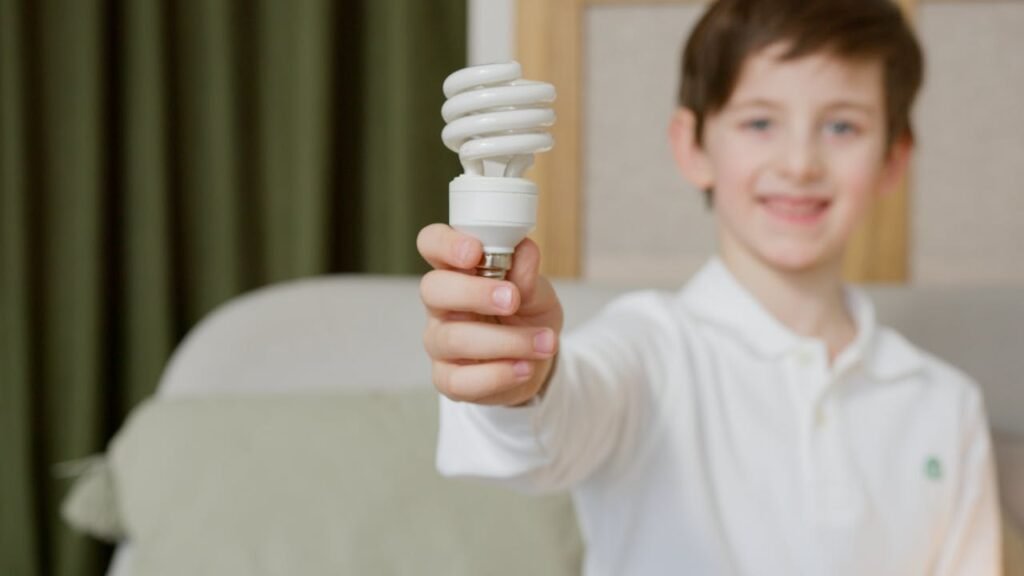
Cognitive growth is not just about age or schoolwork — it’s influenced by everything around a child. The people they live with, the foods they eat, the games they play, the way they sleep, and even how they feel — all of it shapes how their brain grows.
Let’s break it down into the most important things that affect how children think and learn.
1. Environment Matters (Big Time)
Children learn best when they feel safe, calm, and supported. If a child is in a noisy, stressful, or unsafe place, it’s harder for them to focus and think clearly.
Positive environments lead to:
- Better focus and memory
- More curiosity and questions
- Confidence in trying new things
Negative environments can lead to:
- Fear of failure
- Trouble paying attention
- Avoiding new challenges
Real-life tip:
Create a learning corner at home. It doesn’t have to be fancy — just a clean, quiet spot with good light, a chair, and a place to keep their books or toys. Keep it their “thinking space.”
At Debsie:
We create a kind, positive space in every class — even online — so that every child feels safe to ask questions and make mistakes. That’s how real learning happens.
2. Nutrition and Sleep: Brain Fuel
Think of the brain like a little engine. It needs good fuel to run smoothly.
Healthy food helps:
- Boost memory
- Improve focus
- Build strong brain cells
Poor nutrition can lead to:
- Brain fog
- Low energy
- Slow response time
Best brain foods:
- Eggs (great for memory)
- Berries (full of antioxidants)
- Leafy greens (fuel for focus)
- Nuts and seeds (good fats for the brain)
- Water (yes, hydration helps thinking!)
Sleep is just as important.
During sleep, the brain “cleans up,” stores memories, and resets. If kids don’t get enough sleep, they may feel grumpy, forget things, and lose interest in learning.
Real-life tip:
Set a bedtime routine, good sleep is very important for growing minds. Turn off screens an hour before bed. A warm bath, story, or calming music can help them relax.
3. Technology and Screen Time: Find the Balance
Let’s be real — screens are part of our lives. And they can be helpful when used the right way.
Smart screen use can:
- Teach coding, math, or languages
- Boost creativity with art or story apps
- Support visual and auditory learning
Too much screen time can:
- Slow down attention span
- Reduce face-to-face communication
- Disrupt sleep and focus
Real-life tip:
Use the 20-20-20 rule. After 20 minutes of screen time, look at something 20 feet away for 20 seconds. It gives the brain and eyes a quick break.
At Debsie:
Our digital learning is guided by real teachers and built with balance in mind. Lessons are hands-on, playful, and designed to get kids thinking — not just clicking.
4. Emotional Health: Feelings Matter
Kids aren’t just thinking beings — they’re feeling beings too. If a child is worried, sad, or angry all the time, it’s hard for them to focus or think clearly.
A healthy emotional life helps:
- Build self-control
- Improve decision-making
- Support social thinking
Poor emotional support can:
- Block learning
- Lead to negative self-talk
- Lower motivation
Real-life tip:
Name emotions out loud with your child. “I see you’re frustrated.” This helps them feel seen and builds emotional vocabulary. And it opens the door for problem-solving.
At Debsie:
Our teachers are trained not just in subjects, but in empathy. We support every child emotionally, so they feel safe to learn and grow.
Cognitive Growth Isn’t Just About School
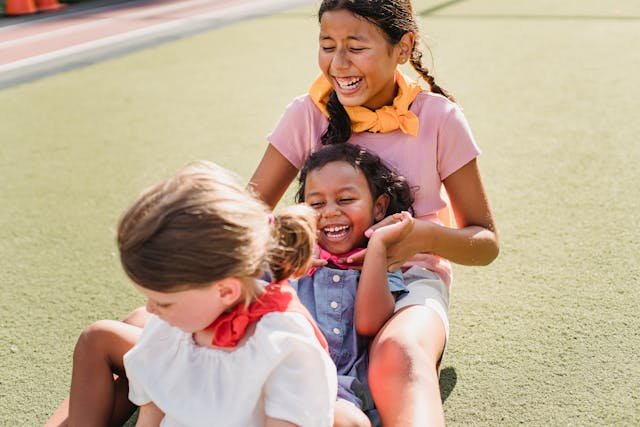
When most people think about brain growth, they think about school: reading, writing, math tests, and science projects. But the truth is — cognitive growth is about much more than just schoolwork. It shapes how children solve problems, handle feelings, make decisions, and even build friendships.
The thinking skills they grow now will help them for the rest of their lives.
Real Life = Real Thinking
Let’s look at how cognitive skills show up in everyday situations.
1. Solving Conflicts
When two kids argue over a toy, what helps them figure it out? Not math or spelling. It’s thinking — pausing, understanding the problem, and finding a solution. That’s cognitive growth.
What helps:
- Teaching kids how to pause and think before reacting
- Encouraging them to see other people’s point of view
- Helping them come up with peaceful solutions
2. Making Choices
Should I wear a raincoat or not? Should I do my homework now or later? Kids make choices all the time. As their thinking grows, they become better at making smart decisions — not just easy ones.
What helps:
- Giving them small choices daily (“Do you want an apple or banana?”)
- Letting them learn from safe mistakes
- Talking through the “why” behind choices
3. Managing Time and Tasks
Cognitive growth helps kids understand time — what “later,” “tomorrow,” or “10 minutes” really mean. As they grow, they start to plan ahead, remember routines, and complete tasks step-by-step.
What helps:
- Using calendars or to-do lists
- Breaking big tasks into small steps
- Praising them for effort, not just the end result
4. Staying Focused and Calm
Staying calm when something’s hard is a thinking skill. So is focusing on one thing at a time. Kids who learn to manage their attention and emotions can handle school, sports, and friendships better.
What helps:
- Breathing exercises and short brain breaks
- Fun focus games (like memory games or puzzles)
- Talking through feelings and reactions
5. Building Confidence
As kids grow stronger in thinking, they start believing, “I can figure this out.” This confidence shows up not just in school, but in trying new hobbies, asking questions, and speaking up for themselves.
What helps:
- Celebrating effort, not perfection
- Showing them how to reflect and learn from mistakes
- Reminding them, “It’s okay not to know. What matters is trying.”
At Debsie, We Grow Thinkers for Life
At Debsie, we don’t just teach facts. We teach children how to use their brain — to be brave thinkers, smart problem-solvers, and kind decision-makers. Our classes are full of real-world thinking, teamwork, and chances to grow not just as students… but as humans.
Whether your child is 5 or 15, learning to think clearly, calmly, and creatively will help them in everything they do — now and forever.
Final Thoughts: Growing Minds, Bright Futures
Every child’s brain is on a journey — from baby giggles to teenage dreams. And as they move through each stage, they’re learning more than just facts. They’re building how to think, solve, choose, focus, and grow.
Understanding these stages of cognitive growth helps us give kids what they really need — not just textbooks and tests, but love, patience, challenges, and the right kind of support at the right time.
At Debsie, we believe every child deserves to feel smart, capable, and confident — no matter where they start. That’s why our learning programs match their stage of thinking, not just their age. Whether they’re discovering how plants grow or coding their first game, we’re here to guide them — one thoughtful step at a time.
Because when children learn how to think well, they don’t just do better in school…
They do better in life.
Read Next:
